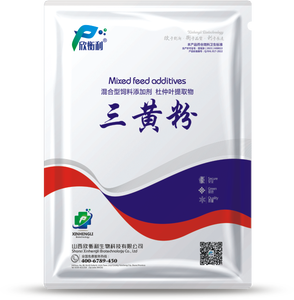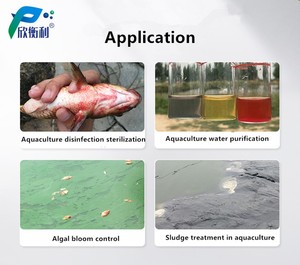
All categories
Featured selections
Trade Assurance
Buyer Central
Help Center
Get the app
Become a supplier

(1616 products available)



























The diverse types of pig feed in Malaysia are primarily classified according to the pigs' age, production purpose, and nutritional requirements. This categorization ensures that the dietary needs of pigs at different growth stages and reproductive conditions are precisely met.
Pig feed is generally divided into starter, grower, finisher, breeding, lactation, and special needs feeds.
Starter feed is specially formulated for piglets, usually from weaning up to 30-60 kg. This type of feed is high in protein, energy, and essential nutrients like vitamins and minerals to support growth. The feed is in the form of a fine mash or pellets that are easy for young pigs to consume. Starter feeds are designed to help piglets smoothly transition from mother’s milk to solid food, minimizing growth setbacks.
Grower feed is intended for pigs aged about 30-60 kg and up to 80-100 kg in weight. This feed helps pigs grow steadily by providing moderate protein and energy levels. The nutrient composition is less dense than starter feed, focusing more on volume rather than high-density nutrient requirements. This type of feed supports the pigs as they move toward market weight or final growth stages.
Finisher feed is designed for pigs nearing market weight, usually around 80-100 kg to 110-120 kg, depending on the market specifications. The primary focus of this feed is to add weight and prepare the pig for slaughter by enhancing muscle mass and fat deposition. Finisher feeds typically contain higher energy and protein content than grower feed to support finishing pig's optimal growth and meat quality.
Breeding feed is formulated for sows and boars, which typically differ significantly in nutrient requirements compared to grower or finisher feeds. This feed is specifically designed to support reproduction, containing high levels of vitamins, minerals, and protein. Sows require special feed formulations during pregnancy and lactation to ensure they can produce healthy piglets and maintain their health.
Lactation feed is for nursing sows, focusing on replenishing their nutrient reserves while ensuring the milk quality remains high for piglet growth. The feed is rich in protein and energy, vital for milk production. Sows need lactation-specific feed to keep them strong and healthy while providing piglets with the nutrients they need through milk.
This type of feed is for pigs with health issues (diabetes or a weak immune system), organic feed (no chemicals or synthetic additives), or specific market demands (higher lean meat, lower fat, or enriched in omega fatty acids for heart-healthy pig meat).
Several key features of poultry feed in Malaysia are crucial to maintaining food safety, supporting the pigs' health, and meeting production requirements. These features include quality ingredients, balanced nutrition, preservation and storage, disease prevention, and sustainability.
The variety of pig feeds in Malaysia is primarily based on ingredient quality, which directly impacts health and growth. Common ingredients used include corn, soybean meal, rice bran, wheat, etc. Some advanced formulations include fishmeal or whey protein for better amino acid profiles. Certain premiums exclude artificial additives, focusing on organic or non-GMO ingredients to enhance feed quality. Feed bought from reputable suppliers who prioritize ingredient integrity for healthier livestock is important.
Proper nutrition is critical for pigs' growth and reproduction. It is important to include the right proportions of proteins, carbohydrates, fats, vitamins, and minerals. Protein is vital for growth, while carbohydrates and fats provide energy. Certain minerals are formulated into the feed for strong bones and teeth, such as calcium and phosphorus. Vitamins like A, D, E, and K support various bodily functions and immune systems. The pig feeds are categorized accordingly for piglets, grower, finisher, breeding, lactation, and special feeds to meet their specific nutritional needs. This feed is formulated to ensure optimal growth, reproduction, and health throughout all pig life stages.
Pigs are very sensitive to taste and texture. The feed used in Malaysia is flavored with sugarcane, citrus pulps, and molasses to make it more palatable. The texture, whether in granular or powdered form, is designed to ensure that all pig sizes can chew and digest the feed easily. Proper flavor and texture significantly reduce feed wastage and ensure that pigs consume the required amounts for healthy growth.
The feeds are enriched with nutrients and should be properly preserved and stored to prevent loss. Certain feeds have preservatives like antioxidants to extend their shelf life and maintain nutritional value. Proper storage in dry, cool, and ventilated areas prevents mold and spoilage, which can cause serious health risks to pigs.
Pig feed in Malaysia often contains additives to enhance growth, improve feed efficiency, or boost immunity. Common additives include probiotics for better gut health, enzymes to aid nutrient absorption, and minerals like zinc and copper to strengthen the immune system. Some feed formulations also include antibiotics, but their use is regulated, and alternatives like phytogenics are gaining popularity.
The packaging of pig feed is also an important consideration, as it affects the feed's quality and safety during storage. Pig feeds in Malaysia typically come in 25 kg or 50 kg bags, which are easy to handle and store. Large-scale operations may also purchase feed in bulk, stored in silo containers. The packaging is tear-resistant and waterproof to prevent moisture ingress and physical damage.
Pig feed in Malaysia has various commercial applications, providing value not only in pork production but also in several other industries. Some of the most common uses include:
Pig feed in Malaysia ensures that pigs grow optimally to produce high-quality pork, the most widely consumed meat in the country. The balanced nutrition in the feed allows for better weight gain, improved feed conversion ratios (FCR), and enhanced meat quality. Specific feeds are designed to target the market preferences for leaner meat or meat with the right fat content.
Since some pig feeds incorporate agricultural by-products like palm kernel expeller, rice bran, and sugarcane bagasse, utilizing these by-products helps reduce waste in the agriculture community. This practice reduces waste in the agricultural community, generating extra income for farmers, and contributes to more sustainable waste management practices within Malaysia.
With the growing trend of pet ownership, certain pig feeds in Malaysia are adapted or used as ingredients in specialty pet foods. For example, pig feed formulations that include high-quality grains and proteins are repurposed for feeding pets like dogs in some niche markets. This is especially applicable to feeds that prioritize organic or non-GMO ingredients, matching the quality standards required for premium pet foods.
Pig manure, when combined with residual pig feed, is used in anaerobic digestion systems to produce biogas. Biogas is a renewable energy source that can be used to generate electricity or heat, reducing dependence on fossil fuels. This application is increasingly being considered in commercial pig operations looking to enhance sustainability and reduce energy costs.
Pig feed residues and pig manure can be processed to produce organic fertilizers. These organic fertilizers are nutrient-rich, containing essential minerals like nitrogen, phosphorus, and potassium needed for crop growth. It reduces fertilizer costs for farmers, improving soil health and fertility, leading to better crop yields.
The skin of pigs, which was formerly an inconvenient by-product, is now converted into high-quality leather goods like shoes, wallets, and belts. Pigskin leather is especially popular in regions where it is more affordable than other leathers, such as cowskin. Pig feaces are also used to produce a feed additive that improves nitrogen use efficiency in poultry and ruminant crops.
Some pig feeds include pharmaceutical-grade ingredients or are processed to extract compounds used in biomedical applications, such as collagens for medical implants, heart valves, and skin grafts. Pigs are also raised on high-quality feed to ensure that the collagen extracted is of superior quality for biotechnological applications.
Several key factors are involved in choosing the right pig feed in Malaysia that meets the nutritional requirements of the pigs, enhances their health, and promotes optimal growth. These key factors are the pigs' age and purpose, nutritional needs, feed formulation, feed cost and availability, and local climate.
It is important to choose the right type of feed based on the age and purpose of the pig. Starter feeds are for piglets, grower feeds for young growing pigs, and finisher feeds for pigs intended for market. Sows and boars also need specialized feeds for breeding and lactation.
For proper pig growth, it is important to ensure that the feed contains the right proportions of proteins, carbohydrates, fats, vitamins, and minerals. Protein is vital for building body tissues and muscle mass, while vitamins and minerals boost the immune system. The feed protein sources should also be compared to ensure that it is not allergenic to the target animal.
Formulated feeds come in pre-mixed and bulk feed options, and home-formulated feed uses local ingredients, which are often more economical than commercially sourced grains. Liquid feed provides moisture and can be more digestible, while medicated feed helps control diseases, especially in densely stocked populations.
Availability is also very important because it is unrealistic to use feed that is not readily available in the market or too expensive to source. Milliliters are obtained from nearby manufacturers of pig feed to ensure they are accessible at the manufacturers' margins. Availability of locally sourced ingredients to prepare the feed should also be considered to avoid relying on imports.
The climate of the region affects feed choice and formulation due to the perishability of certain ingredients and the digestibility of others based on humidity and temperature. For instance, feeds with higher moisture content may not be suitable in humid conditions due to rapid spoilage.
The main ingredient in pig feed in Singapore is corn or maize, which builds the energy base of the diet. Corn is commonly used because it is widely available, affordable, and efficient for generating energy necessary for growth and production. Soybean meal is also extensively used as a major protein source due to its high protein content and essential amino acids. Other common feed ingredients include rice bran, wheat, palm kernel expeller, and fish meal. The pig feed composition is categorized according to the pigs' age and purpose, whether starter, grower, finisher, breeding, or lactation feed.
The best type of pig feed in Malaysia is determined by the pigs' growth stage and purpose. Starter feeds are highly specialized, while grower and finisher feeds are formulated to support growth and prepare the pig for slaughter. Pregnant sows and lactating mothers receive feeds focusing on their high nutrient needs, especially protein and calcium. Specialized feeds for health concerns or market preferences also enhance their feeding.
Proper storage, transportation, and mixing are the main ways to maintain the quality of pig feed in Malaysia. It is crucial to store feed in cool, dry, and ventilated conditions to avoid spoilage, including feeding wastage. Waterproof and tear-resistant packaging can be used. During the transportation, the same consideration should be given to prevent moisture ingress and physical damage. Where the feed is in bulk, the mixer should be well cleaned before mixing to prevent the transfer of an old feed. This can be done by either medicating or manually incorporating new feed ingredients.
Indicates that the feed consumed by pigs influences the quality of pork produced. Feeding pigs a diet rich in healthy grains and balanced fats results in healthier meat. Avoidance of antibiotics and hormones in pig feed also reduces the risk of antibiotic resistance in humans. Nutritional components like omega fatty acids in the feed can enhance meat quality, impacting heart health positively.